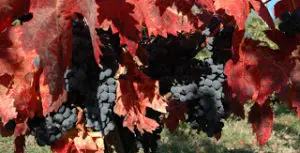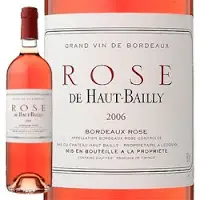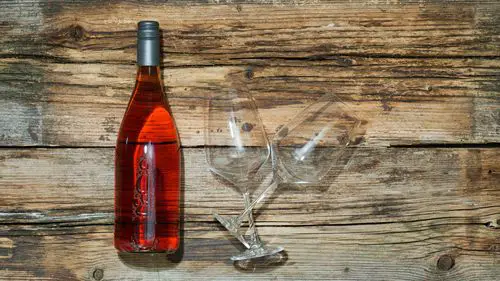The Bordeaux Rosé AOC covers the whole Gironde  production area and these charming wines are made with the same red grapes that are used to make the red wines: Cabernet Sauvignon, Cabernet Franc, Merlot, Petit Verdot, Malbec and Carmenere.
production area and these charming wines are made with the same red grapes that are used to make the red wines: Cabernet Sauvignon, Cabernet Franc, Merlot, Petit Verdot, Malbec and Carmenere.
The vineyards of Bordeaux are now one of the leading producers of Rosé wines. In fact sales of Rosé wines in France have now overtaken those of white wine.
 Bordeaux Rosé is produced from a short maceration of only a few hours and the juice is then vinified as white wine. The colour of these
Bordeaux Rosé is produced from a short maceration of only a few hours and the juice is then vinified as white wine. The colour of these
Rosés varies from pale salmon pink through to fuchsia or pomegranate – some even have hints of orange and beige
. The range of colours depends on the grapes used and wine making techniques. Aromas and flavours vary from fragrant roses, violets through to strawberry, peach, cherry, lemon, candied fruit and spices.
Most wine drinkers don’t realize that Rosés, especially well-made Rosés, can be just as complex as their white or red counterparts . . . and that Bordeaux has been making this style of wine for over 1000 years. They have less tannin than red wine but these wines can be light and refreshing as well as velvety smooth and voluptuous.
It’s thought that the origins of Rosé lie with the Greeks as traders from the city of Phocaea brought wines and vines to southern France around 600 BC, when they founded the city of Marseilles. At that time all wines were generally pale in colour as wine making techniques had not evolved and wines were quickly to avoid spoiling
. These wines didn’t last long, and were usually drunk very quickly.
Most of the Bordeaux Rosés you see on the market are from the famous white wine producing area of the Entre Deux Mers but you might be surprised to learn that the Bordeaux Cru Classé Chateaux also make Rosés under this AOC.
These wines obviously come at a price and some are quite difficult to get hold of and one of their best markets is in Asia, notably Japan. Not surprisingly Bordeaux Rosés are very food friendly and can be enjoyed with dishes from North Africa, the Middle East o r Asia as well as European and Mediterranean cuisine.
r Asia as well as European and Mediterranean cuisine.
Château Pichon Baron makes Rosé des Tourelles de Longueville. The Rosé is made only  in certain vintages and when conditions are right. Château Phélan Ségur in Saint Estephe produces Château Phelan Segur Rosé Bordeaux and Château Calon Ségur makes Rosé de Calon.
in certain vintages and when conditions are right. Château Phélan Ségur in Saint Estephe produces Château Phelan Segur Rosé Bordeaux and Château Calon Ségur makes Rosé de Calon.
Château Kirwan released a Rosé in 2005, producing about 8,000 bottles of Le Rose de Kirwan. Château Giscours released 20,000 bottles of Le Rosé de Giscours in 2004.
In Pessac Leognan Château Haut Bailly makes Rosé de Haut Bailly and Château Smith Haut Lafitte produces Les Hauts de Smith Rosé and has done so since 2000
. Li kewise Château Pape Clement makes Le Prélat de Pape-Clément Rosé. In Pomerol Château Le Gay produces Festival Rosé and in Saint Emilion Clos Fourtet produces Clos Fourtet Rosé, Château Larcis Ducasse produces Le Rose de Château Larcis Ducasse,
kewise Château Pape Clement makes Le Prélat de Pape-Clément Rosé. In Pomerol Château Le Gay produces Festival Rosé and in Saint Emilion Clos Fourtet produces Clos Fourtet Rosé, Château Larcis Ducasse produces Le Rose de Château Larcis Ducasse,
Monbusquet makes La Rosé de Monbusquet, Pavie makes La Rosée de Pavie and Pavie Macquin makes La Rosé de Pavie Macquin.
The owners of the First Growth Château Haut Brion in Pessac Leognan, Clarence Dillon Wines, have produced Clarendelle Rosé Bordeaux. The only other First Growth to produce a Rosé is Château Mouton Rothschild under their Mouton Cadet range.
Bordeaux. The only other First Growth to produce a Rosé is Château Mouton Rothschild under their Mouton Cadet range.
The quality of Bordeaux Rosés has increased dramatically over the past twenty years and there are many award winning Rosés now available that won’t cost as much as those ranked above (see Bordeaux-Undiscoveredfor a selection). They are well worth exploring and given their diversity in style these are versatile and captivating wines.


